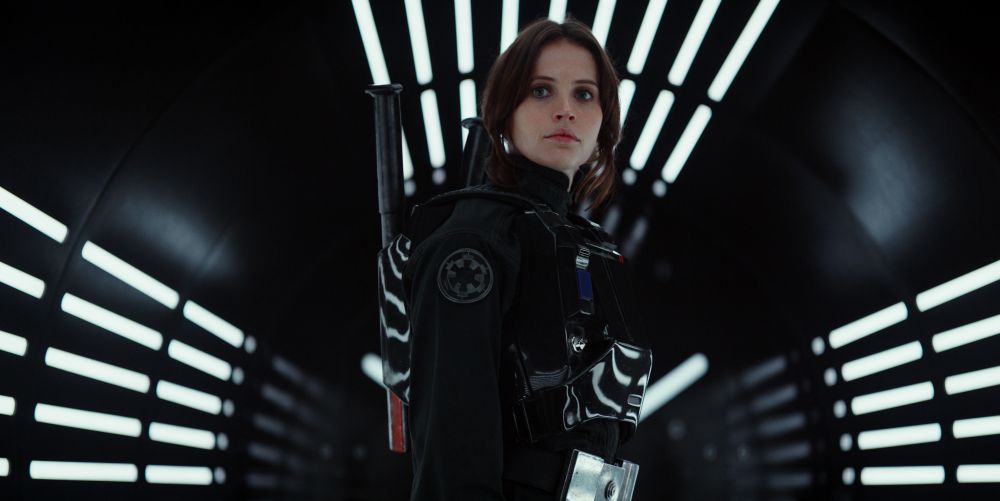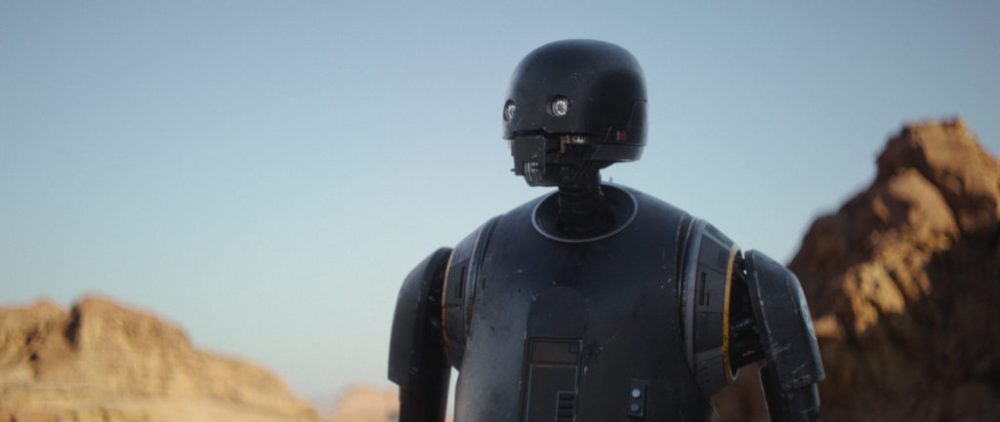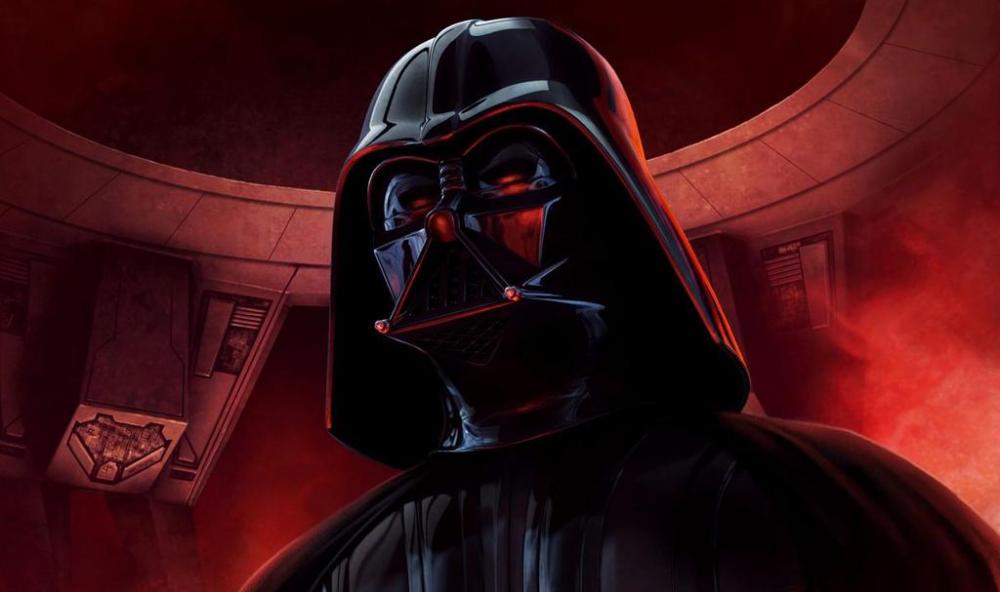
One year after the hugely successful and critically acclaimed Star Wars: The Force Awakens (the first good Star Wars film since 1983), we have another addition to the Star Wars universe in the shape of Rogue One: A Star Wars Story. The first in the “anthology” series, Rogue One follows the events immediately preceding A New Hope in which the Rebel Alliance attempt to steal the Death Star plans which detail exactly how to destroy it.
Every year until at least 2020, we will be getting a new Star Wars movie, and, judging by the amount of money they’re making and praise they’re receiving, Disney might just put out a never ending stream of Star Wars films until the end of time. The Force Awakens earned over $2 billion at the box office and already Rogue One has earned $290 million against a budget of $200 million. So, with the guaranteed financial success of any Star Wars film, can Rogue One simply be seen as a cash grab or does it warrant its place in the Star Wars cannon?

Felicity Jones as lead character, Jyn Erso.
Spoilers ahead.
The first thing to immediately address is that this is a stand-alone film, separate from any trilogy; there will be no sequel and no prequel to Rogue One. This is not to say it doesn’t tie in with the events of Episode III or Episode IV (Rogue One actually finishes almost exactly where A New Hope starts), but Rogue One certainly feels like a separate entity that doesn’t totally rely on the other entries in the series, and this is highly commendable. The separation from the trilogies is highlighted straight from the beginning as, unlike all other Star Wars films, there is no opening crawl. This is one of most iconic parts of the Star Wars franchise and, in order to make Rogue One feel like a stand-alone film, it was absolutely the correct decision to omit an opening crawl from the movie. Tonally, Rogue One feels very different also, it’s far less colourful and much grittier than any other Star Wars film. Although this sets it apart from the rest of the universe, it could be argued it damaged the end product as a result – Rogue One wasn’t very “fun”.
But, what I really appreciated about how Rogue One established an independence from the rest of the franchise was through the fate of the characters – everyone died. In the final battle against the Empire; Bodhi Rook (Riz Ahmed) died from a grenade explosion, Chirrut Îmwe (Donnie Yen) and Baze Malbus (Jiang Wen) were shot and even K-2SO was killed fending off Stormtroopers. Although it sounds quite sadistic, easily the most satisfying deaths were that of Felicity Jones’ and Diego Luna’s characters (Jyn Erso and Cassian Andor, respectively) who were killed at the hands of the Death Star which blew up the entire planet that the compromised Empire base was on. The reason this was so good, apart from showing just how powerful and destructive the Death Star and the Empire can be, is because it adds to the mythology and legend surrounding the Rebel Alliance. Jyn and Cassian were martyrs in the cause and their deaths added even more weight and motivation to the battle against the Empire; keeping them alive would have done nothing from a storytelling point of view, especially as these characters were not in A New Hope. Also, killing off all the characters meant there was no continuity in personnel on the Rebel side, this only increases the degree of separation between Rogue One and the main trilogy films.

K-2SO – a wannabe C-3PO.
In spite of this separation, it’s obviously still a Star Wars film and is totally unmistakable as one. For example, some of the best parts of the film were the scenes with Darth Vader. The return of James Earl Jones’ voice over as well as the choking of Orson Krennic with the Force and Vader’s absolute battering of Rebel forces at the end of the film all helped make Darth Vader’s return to the big screen really enjoyable. Plot-wise, the film didn’t necessarily need Darth Vader and would have coped fine without him, but Vader’s presence really improved the film no end. From the other films, we also had a brief cameo from R2-D2 and C-3PO, the AT-AT Walkers make an appearance in the final battle and there was even some either really good or really creepy (I haven’t quite decided yet) CGI of Princess Leia and Grand Moff Tarkin, even though the actor who played the latter, Peter Cushing, has been dead for 22 years! Although the general charm of the original Star Wars trilogy and The Force Awakens isn’t present throughout, there are enough references and throwbacks sprinkled throughout to make Rogue One feel authentic within the Star Wars universe.

Rogue One saw the return of Darth Vader.
Despite all of this praise, I definitely had some gripes with the film. Most obviously, it felt a little thin on character and we didn’t really get enough time with any of them. None were innately uninteresting – Felicity Jones’ Jyn Erso had some pretty solid motivation, Ben Mendelsohn’s Orson Krennic was a very detestable villain and Donnie Yen’s Chirrut Îmwe (a blind warrior who believes in the force) was quite memorable, but overall there were probably too many characters and too little time to really get to know any of them particularly well. Also, as is often the case in a film like this, the dialogue was at times notably cumbersome and dull, especially when some of the characters’ lines were simply put in to explain what was going on and what needed to be done in order to keep the plot moving and the audience in the loop; it’s just not how people would talk in those situations. Again, linked to this, at times it felt as if there was a little bit of overacting just to try and get a point across more obviously, Forest Whitaker’s performance as Saw Gerrera comes to mind here. In general, it felt as if the first two-thirds of the film dragged, the pacing was a bit off and I did find myself a little bored at points. This is probably because we all knew that the Death Star plans were going to be stolen, and anything leading up to the final battle sequence just felt like buffer, especially as none of the characters were particularly captivating or worth spending any time with.

Forest Whitaker overacted a little, in my opinion.
Speaking of the final battle sequence, the third act saved the film from being a total dud. I’ve already spoken about the deaths and how it runs straight into A New Hope, but the action in this third of the film is incredible. The CGI was (as you’d expect) fantastic, the stakes were genuinely high and the action was unpredictable – you just couldn’t predict who was going to die next! Even though some of the characters lack depth, the storyline suffers slightly from tunnel vision and the film drags a little for the first 80 odd minutes, I’m tempted to say this film is worth seeing for the battle scene and its aftermath alone. (Also, the Stormtroopers kept the meme alive of them not being hit anything with their E-11 blasters, which is a must in any Star Wars movie!).

The final battle sequence is incredible.
But, if there’s one thing that justifies this film’s existence more than any other, it’s the fact that it finally fills in the plot hole that has been the subject of much mockery since the first film was released in 1977 (see the Family Guy clip below). Why was the Death Star built with an exhaust port that went directly to the core of the space station, and why didn’t they at least cover it? The answer is revealed in Rogue One. Jyn Erso’s father, Galen Erso (played by Mads Mikkelsen in probably my favourite performance of the film), was forced to make the Death Star even though he did not sympathise with the Empire. In an act of sabotage, he continued to build and design the planet-destroying space station, but secretly built in a very small and unnoticeable gap whereby the Death Star could be destroyed if hit. By replacing a stupid and lazy oversight by the Empire with a heroic act of resistance by the Rebel Alliance, this helps strengthen A New Hope as a result, and that can only be a good thing.
Rogue One has its issues – it’s very thin on character development, it’s sometimes too dour for its own good and its dialogue is largely wooden – but the making of Rogue One was not just the cynical milking of a cash cow. By virtue of filling in the plot hole of Episode IV, establishing the tone of the anthology series in addition to its independence from the trilogies, as well as the quality of the third act alone, Rogue One can undoubtedly be seen as a worthwhile addition to the Star Wars Universe, even though it’s not a particularly brilliant addition.